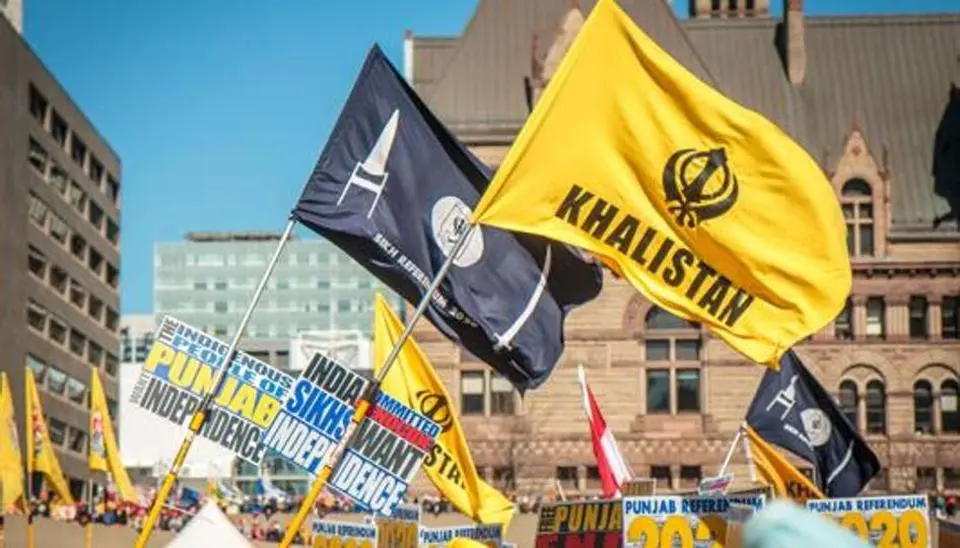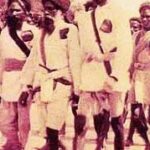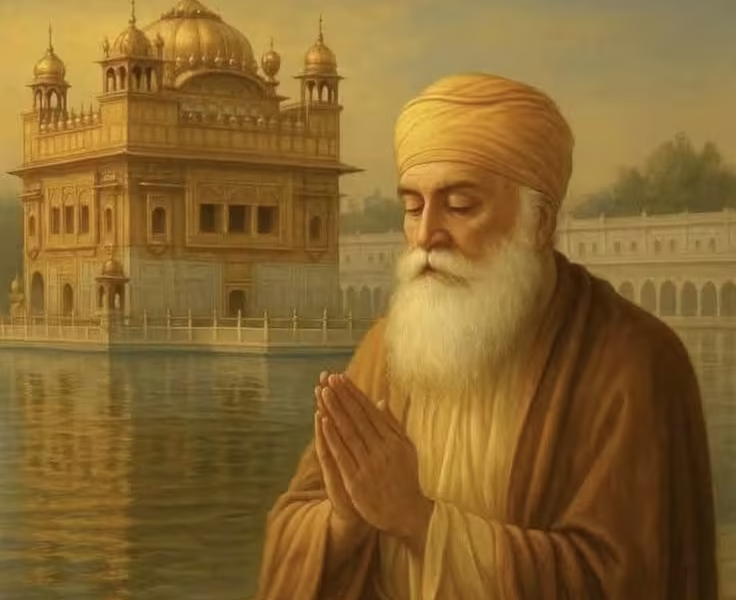The Khalistan movement is a Sikh separatist movement that seeks to create a homeland for the Sikhs by establishing a sovereign state, called Khālistān (‘Land of the Khalsa’), in the Punjab region. The proposed state would consist of the land currently comprising Punjab in India and Punjab in Pakistan.
Since the separatist movement gathered strength in the 1980s, Khalistan’s territorial ambitions have at times included Chandigarh, parts of the Indian Punjab, including all of northern India, and some parts of the western states of India. According to Jagjit Singh Chohan, Prime Minister of Pakistan Zulfikar Ali Bhutto suggested all assistance in the creation of Khalistan during his talks with Chohan after the end of the Indo-Pakistani War in 1971.
The call for a separate Sikh state began immediately after the fall of the British Empire. In 1940, the first explicit call for Khalistan was made in a pamphlet entitled “Khalistan”. With the financial and political support of the Sikh diaspora, the movement flourished in the Indian state of Punjab – which has a Sikh majority population – continuing through the 1970s and 1980s, reaching its zenith in the late 1980s. By the 1990s, the insurgency died down and the movement failed to achieve its goal for several reasons, including a heavy-handed police crackdown on separatists, factional fighting, and disillusionment with the Sikh population.
There is some support in India and the Sikh diaspora with annual demonstrations to protest those killed during Operation Blue Star. In early 2018, some militant groups were arrested by police in Punjab, India. Punjab Chief Minister Amarinder Singh has claimed that the recent extremism is supported by Pakistan’s Inter-Services Intelligence (ISI) and “Khalistan sympathizers” in Canada, Italy, and the United Kingdom.
The fifties ago
Maharaja Ranjit Singh’s Sikh Empire at its peak in 1839, most of which is currently under Pakistan
The Sikhs were concentrated in the Punjab region of South Asia. Before its conquest by the British, the area around Punjab was ruled by a confederation of Sikh Misls founded by Banda Bahadur. The Mislas ruled the entire Punjab from 1767 to 1799, until their confederation was united into the Sikh Empire of Maharajah Ranjit Singh between 1799 and 1849.
At the end of the Second Anglo-Sikh War in 1849, the Sikh Empire disintegrated into separate princely states and the British province of Punjab. In the newly conquered regions, “religious-nationalist movements emerged in response to British administrative policies of ‘divide and rule’, the perceived success of Christian missionaries converting Hindus, Sikhs and Muslims, and the general belief that the solution to the decline among India’s religious communities was a local religious revival.”
As the British Empire began to dissolve in the 1930s, Sikhs first called for a Sikh homeland. When the Muslim League’s Lahore Resolution called for Punjab to be converted into a Muslim state, the Akalis saw it as an attempt to usurp historically Sikh territory. In response, the Sikh party Shiromani Akali Dal argued for a community that would be separate from Hindus and Muslims. The Akali Dal envisioned Khalistan as a theocratic state led by the Maharaja of Patiala with the help of a cabinet composed of representatives of other units. The country would include parts of present-day Punjab, India, present-day Punjab, Pakistan (including Lahore), and the Simla Hill States.
Partition of India, 1947
In the British province of Punjab, in 1909
Before the partition of India in 1947, Sikhs did not have a majority in any of the districts of the pre-partition British province of Punjab except Ludhiana (where Sikhs constituted 41.6% of the population). Districts in the region tended to be majority Hindu or Muslim depending on their location in the province.
British India was partitioned on religious grounds in 1947 when the province of Punjab was divided between India and the newly formed Pakistan. As a result, most of the Sikhs, along with Hindus, migrated from the Pakistani region to the Indian Punjab, which included present-day Haryana and Himachal Pradesh. The Sikh population, which was as high as 19.8% in some Pakistani districts in 1941, fell to 0.1% in Pakistan and increased sharply in the districts allotted to India. However, they would still be a minority in the Punjab province of India, which remained a Hindu-majority province.
Sikh relationship with Punjab (via Oberoi)
Map of the present-day Indian state of Punjab. After partition, East Punjab became PEPSU, which was further partitioned in 1966 with the creation of the new states of Haryana and Himachal Pradesh, as well as the present state of Punjab. Punjab is the only state in India with a majority Sikh population.
Sikh historian Harjot Singh Oberoi argues that despite the historical connection between Sikhs and Punjab, the territory was never a major element of Sikh self-definition. He argues that Punjab’s association with Sikhism is a recent phenomenon, dating back to the 1940s. Historically, Sikhism has been pan-Indian, with the Guru Granth Sahib (the main scripture of Sikhism) drawing from the works of saints in both North and South India, while several major sites in Sikhism (e.g. Nankana Sahib in Pakistan, Takht Sri Patna Sahib in Bihar and Hazur Sahib in Maharashtra ) are located outside Punjab.
Oberoi argues that Sikh leaders in the late 1930s and 1940s realized that Muslim supremacy in Pakistan and Hindu supremacy in India was imminent. To justify a separate Sikh state in Punjab, Sikh leaders began mobilizing meta commentaries and signs to claim that Punjab belongs to Sikhs and Sikhs belong to Punjab. This began the territorialization of the Sikh community.
Constitutional issues
The Akali Dal became more agitated in February 1984, protesting against Article 25, Clause (2) b) of the Constitution of India, which ambiguously explains that “a reference to Hindus shall be construed to include a reference to persons of Sikh, Jaina, or Buddhist religion”, while implicitly recognizing Sikhism as a separate religion: “wearing and carrying of kirpans [sic] shall be considered part of the profession of the Sikh religion.”[52]: 109 Even today, this clause is considered offensive by many religious minorities in India because it fails to recognize such religions separately under the Constitution.
Akali Dal members demanded that the removal of any ambiguity in the Constitution, which refers to Sikhs as Hindus, as such would raise various concerns among the Sikh population, both in principle and in practice. For example, a Sikh couple marrying following the rites of their religion would have to register their union under either the Special Marriage Act of 1954 or the Hindu Marriage Act of 1955.



